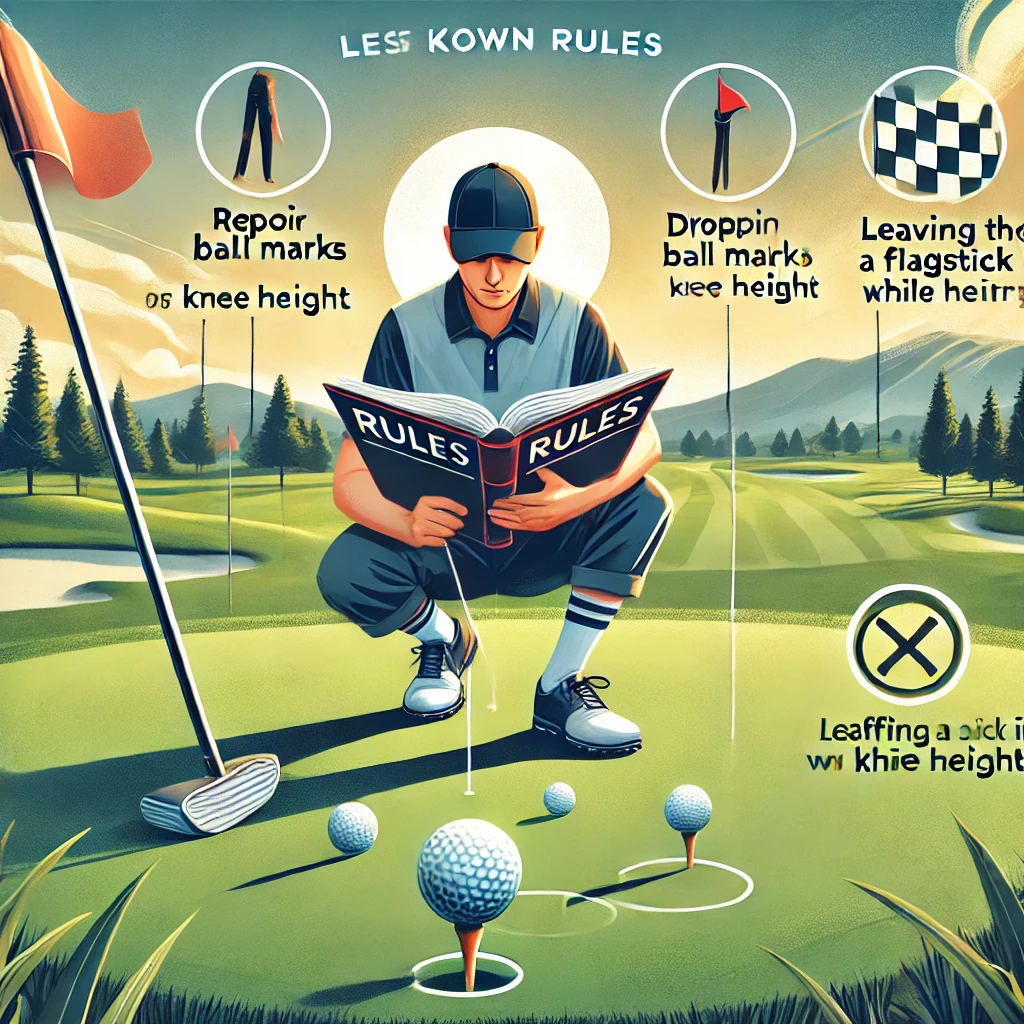

Participating in a golf competition for the first time can be both exciting and intimidating. In addition to perfecting your swing and refining your game strategy, it is essential to have a good understanding of the golf rules, including those that are less known but just as important. This article presents ten of these rules, illustrated with concrete examples, to help you approach your first competition with confidence.
Rule 4.1b states that a player may not have more than 14 clubs in their bag.
If you start a round with 15 clubs in your bag, you must declare the excess club as unusable and receive a penalty of two strokes per hole (with a maximum of four penalty strokes per round).
According to Rule 13.1c(2), you are allowed to repair nail marks and ball marks on the green.
If you notice a nail mark near your putting line, you can repair it before playing your stroke without incurring a penalty.
Rule 16.3 allows you to lift, clean, and drop an embedded ball anywhere on the course, except in a bunker or water hazard.
If your ball is embedded in the ground after rain, you may lift, clean, and drop it without penalty, provided you are outside a bunker or water hazard.
Rule 18.2 limits the time for searching for a ball to three minutes.
If your ball is lost in tall grass, you have three minutes to find it. If you do not find it within this time, the ball is considered lost and you must play a penalty ball from the spot of the previous shot.
.png)
Rule 13.1b allows you to lift and clean your ball on the green.
If your ball is dirty or has mud after rolling on the green, you may lift it, clean it, and replace it exactly at its original spot.
According to Rule 13.1d, if you accidentally move your ball on the green, there is no penalty and you must replace it.
If you drop your putter and move your ball, you may replace it without penalty and continue your play.
Rule 15.2 allows you to move movable obstructions without penalty.
If a beverage can is on your line of play, you may move it without penalty.
Rule 13.2a allows the flagstick to be left in the hole while you are putting.
If you prefer to putt with the flagstick in the hole, you may do so without penalty, even if the ball hits the flagstick.
Rule 14.3b states that you must drop the ball from knee height.
If your ball must be dropped due to a relief situation, make sure to drop it from knee height; otherwise, you must re-drop without penalty.
Rule 16.2 allows you to take relief without penalty if your ball is in a dangerous situation caused by an animal.
If your ball lies near a wasp nest, you can lift and drop it without penalty to avoid stings.
Knowing these less known rules can help you successfully navigate your first golf competition. In addition to respecting etiquette and playing honestly, mastering these rules will allow you to approach every situation with confidence and maximize your performance on the course.

Passionate golfer and co-founder of Teech Golf. My mission with Teech is to build technology that becomes a true companion in helping you improve your game.
Downloard Teech Golf on iOS/Android and get your free customized training plan with video by top coaches !
Download app